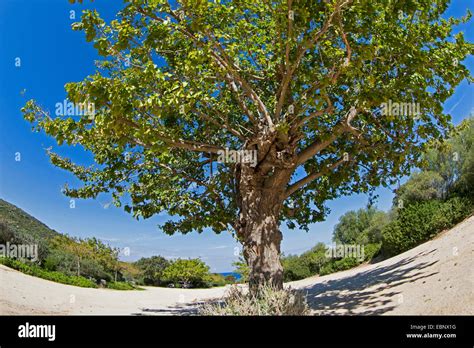mulberry tree ancient china|history of mulberry tree : 2024-09-30 Cultivation of white mulberry to nourish silkworms began more than 4,700 years ago in China and has since been introduced in other countries. The Ancient Greeks and Romans cultivated the mulberry for silkworms. At least as early as 220 AD, Emperor Elagabalus wore a silk robe. It was introduced into other parts of Europe in the twelfth century and into Latin America after the Spanish conquest in . $15K+
0 · russian mulberry tree
1 · morus alba native range
2 · morus alba common name
3 · history of mulberry tree
4 · cudrania chinese melonberry
5 · chinese mulberry tree for sale
6 · chinese mulberry plant care
7 · chinese melon berry tree
8 · More
$8,249.00
mulberry tree ancient china*******Later agricultural literature also claimed that, in contrast to “tree mulberry” (also known as Jing mulberry), the branches of which must be cut in successive years and could only be used in at least the third year, “ground mulberry” can feed silkworms the .Cultivation of white mulberry to nourish silkworms began more than 4,700 years ago in China and has since been introduced in other countries. The Ancient Greeks and Romans cultivated the mulberry for silkworms. At least as early as 220 AD, Emperor Elagabalus wore a silk robe. It was introduced into other parts of Europe in the twelfth century and into Latin America after the Spanish conquest in .
A Babylonian etiological myth, which Ovid incorporated in his Metamorphoses, attributes the reddish-purple color of the mulberry fruits to the tragic deaths of the lovers Pyramus and Thisbe. Meeting under a mulberry tree (probably the native Morus nigra), Thisbe commits suicide by sword after Pyramus does the same, he having believed, on finding her bloodstained cloak, that she was kill.
Mulberry, a book celebrating the marvellous tree, goes beyond its ancient links to silk production to explore its role in everything from the oldest banknotes to modern drugs
These Chinese coins dating back to the Song Dynasty (960-1279) were found in 2005 Iron coins aren't terribly practical. If you traded in a handful of silver coins - .
History of Silk. Imperial era Chinese clothing. The people living in the region were the inventors of silk fabric, and no other culture discovered this process independently. The history of silk making stretches back 6,000 .
Mulberry trees find mention in ancient myths and legends, particularly in regions like ancient China. These trees held significant importance in the SILK industry of that era. .Traditional Mulberry System in Xiajin’s Ancient Yellow River Course is located on the sandy land, which is the ancient course left by the Yellow River when its course .
Thus the mulberry tree was given a sacred connotation and a fertility cult. Mr. Zhu Tianshun says that, according to the records of ancient Chinese books, the plants .
The popularity of the White Mulberry tree emerged when its importance to the silk producing process was discovered. A great myth and its variations about the beginning . Life The odd history of the mulberry tree's ties to silk, music and money. Mulberry, a book celebrating the marvellous tree, goes beyond its ancient links to silk production to explore its role in . In ancient Chinese culture, the mulberry tree was associated with enlightenment and the pursuit of knowledge. The silkworm, which feeds on the leaves of the mulberry tree, was also highly revered in Chinese culture as a symbol of transformation and growth. By incorporating the Mulberry tree into his painting, Van Gogh may have .Morus alba, known as white mulberry, common mulberry and silkworm mulberry, is a fast-growing, small to medium-sized mulberry tree which grows to 10–20 m (33–66 ft) tall. It is generally a short-lived tree with a . Mulberry paper finds its roots in Asia, with its origins tracing back to ancient China, where it was initially used for calligraphy and artwork. Over time, its popularity spread across East Asia, including Japan and Korea, where it became an integral part of their artistic traditions. . The bark of the Paper Mulberry tree is harvested by hand . The three different kinds of mulberry trees come from three different parts of the world. You'll find the white mulberry ( Morus alba) growing wild in eastern and central China, but it's been naturalized for hundreds of years in Europe too. The red mulberry ( Morus rubra) is also called the American mulberry, so you can guess its origins. Since ancient times, there is no other tree that meets people's needs such as "food, clothing, housing, and medicine" like the mulberry tree. More than 5,000 years ago, the ancestors of China knew mulberry trees, and gradually learned to introduce and cultivate them, collect leaves and raise silkworms, reel silk, and print and dye jacquard, . The mulberry tree has come to represent different ideas among different cultures. It has been the sign of nature, faith, growth and for some death. The mulberry tree thrives in Asia, Europe and the Middle East. Its berries are edible, its supple wood is good for carving and its bark and leaves are used to make paper.

Apart from the economical use, mulberry trees also play an important role in ancient Chinese culture. In ancient China, people liked to plant mulberry trees around their houses. The tender branches can be used for making bowls and other small furniture. Therefore, in ancient poems "mulberry tree" represents home.history of mulberry treeMulberry Tree. As is known to all silk is a unique invention of China. . a Concubine of the Chinese ancient Emperor Xuanyuan, is recognized as the ancestor of sericulture and silk spinning .
According to legend, the first sheets of paper were made in A.D. 105 by Ts'ai Lun, a Chinese eunuch at the Imperial Chinese court, from mulberry leaves, old fish nets, hemp, tree bark, and rags. For the ancient Chinese paper was more than a material to write on. From at least the 5th century A.D. the Chinese made hats, shoes, belts, curtains .The fruitless mulberry is a male clone of any variety of mulberry tree. It produces copious amounts of pollen, which can trigger allergies. It has a dense, round-topped crown and can grow 30 to 50 feet. The leaves can be oval to lobed with no uniform shape. Young branches are an orange-brown color. Tree bark, hemp, bamboo, and mulberry leaves were all used in the production of paper in ancient China. Papermaking in ancient China was a multi-step process that required a lot of time and effort. After amassing the necessary supplies, the first step was to soak the raw materials in water for several days to soften them. The paper is primarily made from the cambium – the inner bark – of the paper mulberry tree, the mitsumata shrub and the gampi tree. Because such a small part of the cambium of the plants .
In the traditional Mulberry agroforestry system of Xiajin county (Shandong, China), mulberry trees are cultivated together with other fruit trees (peaches, plums, pears, apricots, jujubes .The fruitless mulberry is a male clone of any variety of mulberry tree. It produces copious amounts of pollen, which can trigger allergies. It has a dense, round-topped crown and can grow 30 to 50 feet. The leaves can be oval to lobed with no uniform shape. Young branches are an orange-brown color. Tree bark, hemp, bamboo, and mulberry leaves were all used in the production of paper in ancient China. Papermaking in ancient China was a multi-step process that required a lot of time and effort. . The paper is primarily made from the cambium – the inner bark – of the paper mulberry tree, the mitsumata shrub and the gampi tree. Because such a small part of the cambium of the plants .
In the traditional Mulberry agroforestry system of Xiajin county (Shandong, China), mulberry trees are cultivated together with other fruit trees (peaches, plums, pears, apricots, jujubes .mulberry tree ancient china history of mulberry treeThis is because it satisfies local people’s demands for clothing, food and daily necessities, and sustains biodiversity in the ancient course of the Yellow River. Food and Livelihood Security. Mulberry trees have stable yields. One old mulberry tree produces 400 kg of mulberries per year, and 225 kg of fresh leaves per year.
The bark of paper mulberry is the main raw material of Cai Lun papermaking, one of the four great inventions in ancient China. The tree's leaves are the raw materials for high-quality protein feed. In this study, we discovered a new virus named Quanzhou mulberry virus (QMV), which was identified from the leaves of an ancient mulberry tree. This tree is over 1300 years old and is located at Fujian Kaiyuan Temple, a renowned cultural heritage site in China. We obtained the complete genome sequence of QMV using RNA sequencing .
mulberry tree ancient china The Chinese Tree of Life is an ancient symbol of spiritual enlightenment and the quest for knowledge. . The mulberry tree has played in Chinese mythology. It is thought to have been the first tree to appear on earth and to have given humans the ability to create silk. The mulberry tree was also essential for silkworm farming, which was a . The invention of paper is attributed to ancient China. Papermaking is traditionally believed to have been invented by Cai Lun, a Chinese eunuch and official during the Eastern Han Dynasty, around 105 CE. . He is known for refining the papermaking process by using a mixture of mulberry tree bark, old fishing nets, and . A Chinese Empress and the Discovery of Silk-Making. About 2700-2640 B.C.E., the Chinese began making silk. According to Chinese tradition, the part-legendary emperor, Huang Di (alternately Wu-di or Huang Ti) invented the methods of raising silkworms and spinning silk thread. Huang Di, the Yellow Emperor, is also credited as . The bark of paper mulberry is the main raw material of Cai Lun papermaking, one of the four great inventions in ancient China. The tree's leaves are the raw materials for high-quality protein feed .The paper mulberry (Broussonetia papyrifera, syn. Morus papyrifera L.) is a species of flowering plant in the family Moraceae.It is native to Asia, where its range includes mainland China, Taiwan, Japan, Korea, Southeast Asia, Myanmar, and India. It is widely cultivated elsewhere and it grows as an introduced species in New Zealand, parts of Europe, the .
It’s the first “nice” mechanical watch for many enthusiasts, and for some, it’s the only watch they’ll ever own. Let’s discuss some key points to keep in mind if you’re considering purchasing an Omega Speedmaster. There’s even a slightly controversial one towards the end. 1. The Size of the Omega Speedmaster
mulberry tree ancient china|history of mulberry tree











